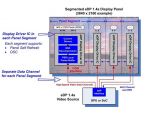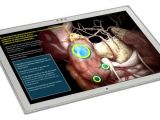4K laptops have been slowly making their way into the mainstream as device manufacturers like ASUS and Apple have been pushing out products with insane displays.
But as it often happens in the tech industry, 4K might not sound all so impressive in a year’s time. That’s because the Video Electronics Standards Associations has just pulled the veil off the Embedded DisplayPort 1.4a.
8K laptops anyone?
This is an innovative new standard which will help push the 8K into the world of laptops, all-in-one PCs and someday maybe even mobile devices.
The new tech lets notebooks make use of 8K displays which translates into 7,680 x 4,320 pixel resolution. To achieve this feature, the system will compress the video feed to squeeze more data. It will also devide displays in two or four segments so the whole setup can handle all the extra pixels being thrown in.
For the time being we have been hearing of 8K only when talking about the high-end TV ecosystem. For example, Japan’s NHK is said to be testing 8K broadcasting for the 2020 Olympics which is scheduled to take place in Tokyo.
Tablets and smartphones with 4K are yet to go mainstream. Panasonic has been offering a 4K tablet with a massive 20-inch tablet sustained by an Intel Core i5 processor clocked at 1.9GHz, but apart from that we can’t say 4K devices have been flooding the market.
Can the human eye make a difference?
But the questions remains, do we really need 4K or 8K displays since it’s pretty hard for the human eye to differentiate pixels on a small screen? On top of that, an 8K panel might prove to be quite expensive for a device maker to embed into a device.
Displays represent a mobile’s device most power hungry part. But thanks to the new eDP standard, we might end up seeing laptops with an improved battery life via reducing display circuitry and improving processing of pixels.
The new technology is said to be able to allow a graphic processor to refresh pixels only in some parts of the display and not on the entire screen, as it happens with current models.
VESA says that it expects to see the new standard to ship with the new DisplayPort by 2016, but don’t hold your breath on seeing 8K laptops all that soon. The new technology will probably be made available on 8K smart TVs first and then move on to smaller devices.

 14 DAY TRIAL //
14 DAY TRIAL // 


